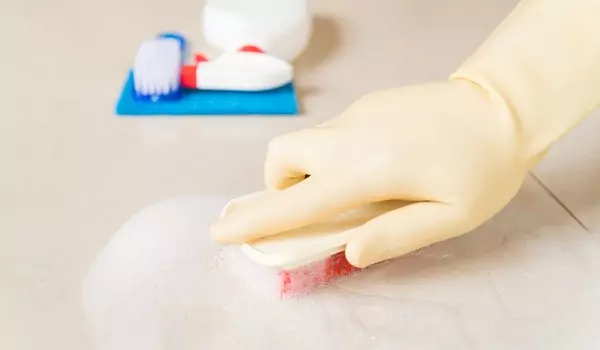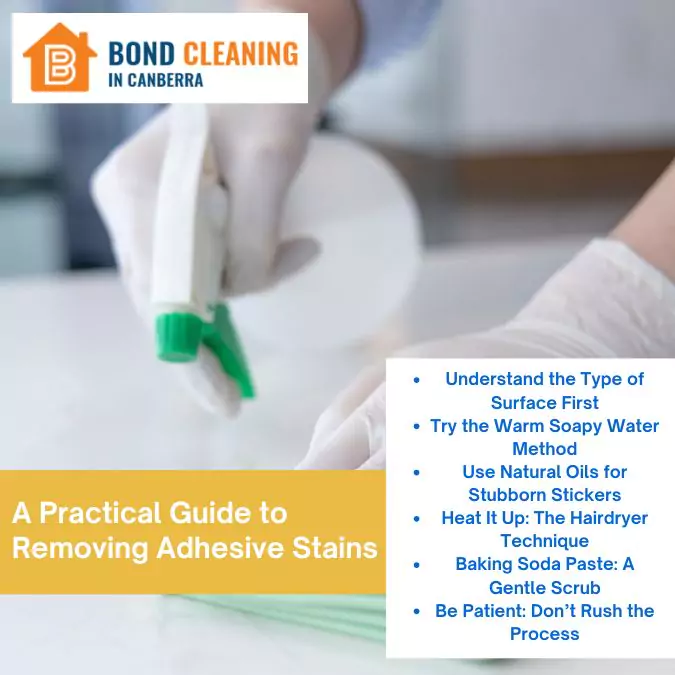How To Safely Remove Sticker And Label Residue From Surfaces
When moving out of a rental property, every detail is important, especially if you want your bond back. One of the most underestimated annoyances is sticker and label residue that adheres stubbornly to surfaces. Whether it is price tags on mirrors, kids’ stickers on furniture or shipping labels on appliances, those sticky patches can ruin the look of an otherwise clean home.
For tenants involved in budget end of lease cleaning Canberra, this seemingly small issue can cause unnecessary delays during inspections. But you do not need harsh chemicals or expensive products to get rid of it. This blog will let you know how to remove sticker and label residue from surfaces. With the right method, you can leave every surface of your house spotless and bond ready.
Hide
Show
1. Understand the Type of Surface First
Before you start, make sure you know what surfaces you will be working on. Wooden, glass, plastic, stainless steel or coated wall? Every surface responds differently to solvents, heat and moisture. Using the improper approach can result in lasting damage or discolouration.
Plastic, for example, is readily damaged, wood absorbs oils and warps and painted walls peel with excessive force. Knowing your surface allows you to select the safest cleaning process, ensuring that you clean thoroughly without damaging the finish.
2. Try the Warm Soapy Water Method

Warm soapy water is also one of the safest and most efficient means of removing residue. It can work best on non porous surfaces like glass, plastic, and tiles. Wet a soft cloth or sponge in a dish soap mixture of a few drops and warm water. Place it on the sticker residue for 5-10 minutes.
Once the area has soaked, gently scrub it with a sponge or microfiber cloth. Wet glue is softer, making removal easier without damaging the surface. To remove more tenacious residue, repeat the procedure or use a slightly stronger solution.
3. Use Natural Oils for Stubborn Stickers
Sticky residues can be effectively removed from wood, metal, and some plastics using natural oils like baby oil, coconut oil and olive oil. Apply a small amount immediately to the residue and leave it for 10-15 minutes. The oil softens the glue without affecting the finish.
Natural oils such as olive oil, coconut oil, and baby oil are excellent for breaking down sticky residues, particularly on wood, metal, and some plastics. Apply a small amount quickly on the residue and let it sit for 10-15 minutes. The oil softens the glue without affecting the finish.
4. Heat It Up: The Hairdryer Technique
Another excellent technique for reducing adhesive residue is heat. Particularly on mirrors, glass surfaces and laminated furniture, a standard hair dryer set to medium heat works incredibly well. Apply heat for 30-60 seconds while holding the dryer a few inches away.
Use a plastic scraper, such as an old credit card, or your fingers to remove it once the adhesive has melted. This technique completely does away with the need for dangerous chemicals and works particularly well for old stickers that have hardened over time.
5. Baking Soda Paste: A Gentle Scrub
Baking soda can be a lifesaver in difficult situations where oil or heat does not work. Make a mild paste by combining baking soda and water or coconut oil. This offers a moderate abrasiveness that can aid in residue removal without scratching.
Apply the paste to the sticky area and allow it settle for 5 minutes. Then, using a cloth or a soft bristle brush, scrub gently in circular motions. It’s excellent for cleaning appliance surfaces, ceramics and painted wood; however, exercise caution and test on a tiny area first.
6. Be Patient: Don’t Rush the Process
Sticker residue can be frustrating, but excessive cleaning or picking at it can cause more harm than good, particularly on sensitive or painted surfaces. Rushing the removal process may result in scratches, dents, or discolouration that are difficult to repair.
Instead, give the method some time to work. Whether it’s oil, heat or soapy water, let the surface soak or warm up for a few minutes. Always use soft cloths or plastic tools, and repeat the gentler techniques before moving to anything abrasive. A little patience goes a long way in ensuring a damage free clean.
7. Bonus Tips for Safe Sticker Removal
If you’re preparing for a professional end of lease cleaning in Canberra, don’t forget to inspect often missed spots: fridge doors, light switches, wardrobes and windows. These areas often have lingering stickers or tape marks that can cost you during the final inspection.
Also, don’t use harsh solvents like acetone or nail polish remover unless you’ve tested them and are certain they won’t harm the surface. When in doubt, begin with the mildest option and progressively work your way up.
A Practical Guide to Removing Adhesive Stains

Wrapping up
Removing sticker and label residue does not have to be a hassle. With a little patience and the proper method, you can restore surfaces to their previous condition without scratching, staining, or peeling. Whether you’re dealing with stubborn labels on appliances or amusing stickers on furniture, there is a safe solution for every surface. Details are vital for tenants nearing the end of their rental agreement. Paying attention to things like sticker residue could make a big difference in your overall inspection.

